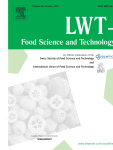Ver ítem
- xmlui.general.dspace_homeCentros e Institutos de InvestigaciónCIA. Centro de Investigaciones de AgroindustriaInstituto de Tecnología de AlimentosArtículos científicosxmlui.ArtifactBrowser.ItemViewer.trail
- Inicio
- Centros e Institutos de Investigación
- CIA. Centro de Investigaciones de Agroindustria
- Instituto de Tecnología de Alimentos
- Artículos científicos
- Ver ítem
The incorporation of alpha-tocopherol and functional doses of phytosterol esters during cheesemaking does not affect DNA or mRNA dynamics of Streptococcus thermophilus and Lactococcus lactis throughout and after the end of ripening
Resumen
Tocopherols and phytosterols are lipid-soluble molecules which have been widely used in the food industry. Nevertheless, the influence of these compounds on the performance of starter lactic acid bacteria (SLAB) in fermented foods has received little attention. Here, we assessed the behavior of Streptococcus thermophilus and Lactococcus lactis during the ripening of a functional Port Salut light cheese elaborated with these SLAB and with alpha-tocopherol
[ver mas...]
Tocopherols and phytosterols are lipid-soluble molecules which have been widely used in the food industry. Nevertheless, the influence of these compounds on the performance of starter lactic acid bacteria (SLAB) in fermented foods has received little attention. Here, we assessed the behavior of Streptococcus thermophilus and Lactococcus lactis during the ripening of a functional Port Salut light cheese elaborated with these SLAB and with alpha-tocopherol and phytosterol esters as bioactive molecules. Functional and control cheeses were manufactured at an industrial plant and sampled at 7, 21, 40, 60 and 90 days after elaboration for real-time quantitative PCR (qPCR) or reverse transcription-qPCR (RT-qPCR) experiments. Target DNA and mRNA from both SLAB were detected after 90 days of elaboration in both functional and control cheeses, supporting their potential role in generating flavor metabolites. Furthermore, here we showed for the first time that the addition of alpha-tocopherol and functional doses of phytosterols did not affect DNA or mRNA dynamics of these SLAB during cheesemaking, throughout and after the end of ripening. Therefore, our results support the use of cheese manufactured with both S. thermophilus and L. lactis as an optimal delivery system for these beneficial bioactive compounds.
[Cerrar]

Autor
Fuente
LWT - Food Science and Technology 84 : 838-841 (October 2017)
Fecha
2017-10
ISSN
0023-6438
Formato
pdf
Tipo de documento
artículo
Palabras Claves
Derechos de acceso
Restringido
 Excepto donde se diga explicitamente, este item se publica bajo la siguiente descripción: Creative Commons Attribution-NonCommercial-ShareAlike 2.5 Unported (CC BY-NC-SA 2.5)
Excepto donde se diga explicitamente, este item se publica bajo la siguiente descripción: Creative Commons Attribution-NonCommercial-ShareAlike 2.5 Unported (CC BY-NC-SA 2.5)

